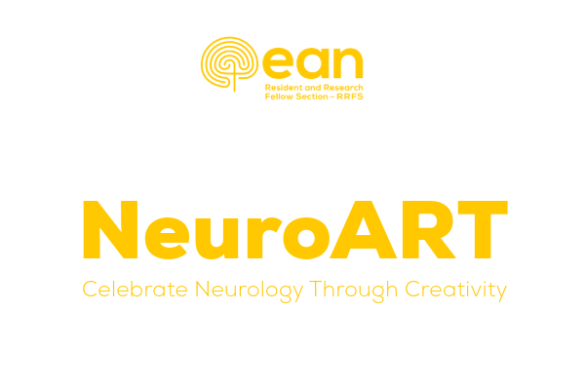by Raphael Wurm
Each month the eanNews editorial team reviews the scientific press for recently published papers of outstanding interest to neurologists. Below we present our selection for August 2025.
For our Paper of the Month, go here: Research Paper of the Month: Higher Educational Attainment and Accelerated Tau Accumulation in Alzheimer Disease – eanNews
GLP-1 Receptor Agonists Show Promise in Managing Idiopathic Intracranial Hypertension
A large retrospective cohort study suggests that glucagon-like peptide 1 receptor agonists (GLP-1 RAs) may be an effective treatment for idiopathic intracranial hypertension (IIH). Using electronic health records from the TriNetX US Collaborative Network, researchers compared 555 patients with IIH who initiated GLP-1 RA therapy with 555 propensity score-matched controls receiving conventional treatments. Over a one-year follow-up, the GLP-1 RA group demonstrated significantly better outcomes across multiple measures.
Patients treated with GLP-1 RAs had a substantially lower need for other IIH medications, such as acetazolamide or topiramate (Risk Ratio [RR], 0.53; 95% CI, 0.46-0.61; P < .001). They also reported fewer key symptoms, including headaches (RR, 0.45; 95% CI, 0.35-0.58; P < .001), visual disturbances (RR, 0.60; 95% CI, 0.41-0.88; P = .007), and papilledema (RR, 0.19; 95% CI, 0.10-0.34; P < .001). Furthermore, the need for procedural interventions like shunting was significantly reduced in the GLP-1 RA group (RR, 0.44; 95% CI, 0.30-0.63; P < .001). These findings highlight the potential of GLP-1 RAs as a novel management strategy for IIH, although prospective trials are needed to confirm these results.
Read the full paper: GLP-1 Receptor Agonists in Idiopathic Intracranial Hypertension | Neurology | JAMA Neurology | JAMA Network
Structured Walking Protocol Improves Endurance After Stroke
A pragmatic, cluster-randomised trial conducted across 12 Canadian inpatient stroke rehabilitation units has demonstrated that a structured, high-repetition walking protocol, known as ‘Walk ‘n Watch,’ leads to clinically significant gains in walking endurance for patients with subacute stroke. The study, which included 306 participants, compared the outcomes of patients receiving the Walk ‘n Watch intervention to those receiving usual care. The intervention required a minimum of 30 minutes of walking-related activities per session, with intensity progressively increased based on heart rate and step counts.
After four weeks, patients in the Walk ‘n Watch group showed a substantially greater improvement in their six-minute walk test (6MWT), the primary endpoint, compared to the usual care group. The improvement was 43.6 metres greater in the intervention group (95% CI 12.7–76.1). At the four-week mark, the mean distance walked was 297.2 m for the Walk ‘n Watch group versus 223.6 m for the usual care group. Importantly, the protocol was found to be safe, with no serious adverse events occurring during intervention sessions. These findings suggest, perhaps to little surprise, that structured physical activity is beneficial and can be effectively implemented in real-world clinical settings to enhance recovery of walking ability after stroke.
Fenebrutinib Reduces New Brain Lesions in Relapsing Multiple Sclerosis
The FENopta trial, a phase 2, multicentre, double-blind study, has shown that the Bruton’s tyrosine kinase (BTK) inhibitor fenebrutinib significantly reduces new inflammatory brain lesions in patients with relapsing MS. The study randomly assigned 109 patients to receive either 200 mg of fenebrutinib twice daily (n=73) or a placebo (n=36) for 12 weeks. The primary efficacy endpoint was the total number of new T1 gadolinium-enhancing (Gd+) lesions on brain MRIs performed at weeks 4, 8, and 12.
The results demonstrated a robust effect of the treatment. The combined number of new T1 Gd+ lesions was significantly lower in the fenebrutinib group (0.077) compared to the placebo group (0.245), corresponding to a 69% relative reduction (95% CI 34–85; p=0.0022). This effect was sustained, with an unadjusted annualised relapse rate of just 0.04 through week 48 in the open-label extension phase. Fenebrutinib was well tolerated; the most common adverse events were mild liver enzyme elevations, headache, and nasopharyngitis, with no serious adverse events reported. These findings suggest that fenebrutinib exerts an early and sustained effect, supporting its further investigation for both relapsing and progressive forms of MS.
Study Finds No Increased Cardiac Risk with Lamotrigine in Older Adults with Epilepsy
A large retrospective cohort study investigated whether the antiseizure medication lamotrigine was associated with an increased risk of serious cardiac events in older adults with epilepsy. Researchers analysed Medicare data from over 158,000 new users of either lamotrigine or levetiracetam to compare the incidence of ventricular arrhythmia and sudden cardiac arrest (VA/SCA). The study was prompted by a 2020 FDA warning about potential cardiac risks with lamotrigine.
After adjusting for baseline differences, the incidence of VA/SCA was not statistically higher among the 11,786 lamotrigine users compared to the 147,130 levetiracetam users (7.0 vs 8.2 per 1,000 person-years, respectively; Hazard Ratio [HR] 0.84, 95% CI 0.67–1.06). Interestingly, in subgroups of patients with pre-existing heart conditions, lamotrigine was associated with a reduced risk. This included patients with baseline arrhythmia (HR 0.51, 95% CI 0.32–0.80) and those using antiarrhythmic drugs (HR 0.67, 95% CI 0.50–0.91). The authors conclude that their findings do not support the reported cardiac risks or the recent changes to lamotrigine’s safety label.
Read the full paper: Risk of Ventricular Arrhythmia and Sudden Cardiac Arrest Among Older Patients Using Lamotrigine for Epilepsy | Neurology
Intra-arterial Tenecteplase After Thrombectomy Improves Outcomes in extended Window
In a prospective, randomized trial, administering intra-arterial tenecteplase after a successful thrombectomy significantly improved the chances of an excellent functional outcome for patients with a large vessel occlusion stroke. The study included 256 adults treated between 4.5 and 24 hours after symptom onset across 19 centres in China. After successful mechanical clot removal, patients were randomized to either receive intra-arterial tenecteplase at a dose of 0.125 mg/kg (n=126) or standard medical care (n=129).
The primary endpoint, an excellent outcome defined as a modified Rankin Scale (mRS) score of 0 or 1 at 90 days, was achieved by 40.5% of patients in the tenecteplase group compared to 26.4% in the standard treatment group (relative risk, 1.44 [95% CI, 1.06-1.95]; P = .02). The treatment did not increase the risk of adverse events; symptomatic intracranial haemorrhage occurred in 5.6% of the tenecteplase group versus 6.2% of the control group, and mortality at 90 days was also similar (21.4% vs 21.7%). While these primary results are promising, none of the seven secondary efficacy endpoints showed a significant difference, prompting the authors to call for further trials to confirm the findings.
Read the full paper: Intra-arterial Tenecteplase for Acute Stroke After Successful Endovascular Therapy: The ANGEL-TNK Randomized Clinical Trial | Emergency Medicine | JAMA | JAMA Network













